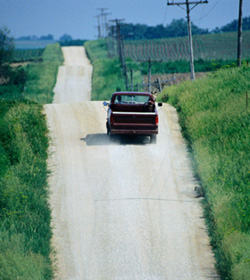Quantum Tunneling on Newton’s Terms

Quantum mechanics is a messy business, especially when researchers are working with a cluster of interacting atoms. A new method appearing in the 26 November print issue of PRL may simplify such multi-atom calculations. Researchers expressed a particle’s complicated quantum wave function in terms of a group of classical and independent particles. Then, by making the particles interact, they approximated quantum tunneling–a phenomenon forbidden by classical mechanics. This demonstration, they hope, will encourage others to use classical approximations for complex quantum problems, which arise in many areas of theoretical chemistry.
In the field of physics, a clear line divides quantum mechanics from traditional Newtonian mechanics, but this is not true for chemistry. “Chemistry is at the edge of night between quantum and classical,” explains Craig Martens, a theoretical chemist at the University of California (UC) at Irvine. Chemists are frequently confronted with systems too large to model quantum mechanically but too small for pure classical approximations. This results in a sort of “schizophrenia” among many chemists who have to jump between quantum and classical worlds, he says. Over the years, researchers have proposed a number of solutions to this problem, including computationally simpler classical approximations of quantum phenomena. But such approximations had limited accuracy and cannot capture all quantum phenomena.
Now a scheme proposed by Martens and his UC colleague Arnaldo Donoso uses 900 classical particles to approximate single particle quantum tunneling–the Houdiniesque passage of a particle through an insurmountable energy barrier. Most of the particles begin the procedure with positions and momenta that trap them within a well of potential energy; only a few have enough energy to escape over a barrier. The team then adds a term to the classical equations which causes the particles to interact with one another. They then behave somewhat like marbles bouncing around inside a bowl that is being continually jostled, Martens says. Even if, on average, none of the remaining trapped particles has enough energy escape, a series of “collisions” can catapult one of them over the rim. The fraction of particles that escape this way is close to the probability for a single quantum particle to tunnel out of the well by conventional quantum mechanics.
“Quantum tunneling is a crucial part of many chemical reactions,” says William Reinhardt of the University of Washington in Seattle. So this method could provide researchers with much more accurate calculations of things like reaction rates. But, cautions John Tully of Yale University, the new scheme hasn’t yet proven itself. “The question is: In [systems] where quantum dynamics becomes totally hopeless, does this offer any advantages?” It’s probably still too early to tell, he says.
–Geoff Brumfiel


